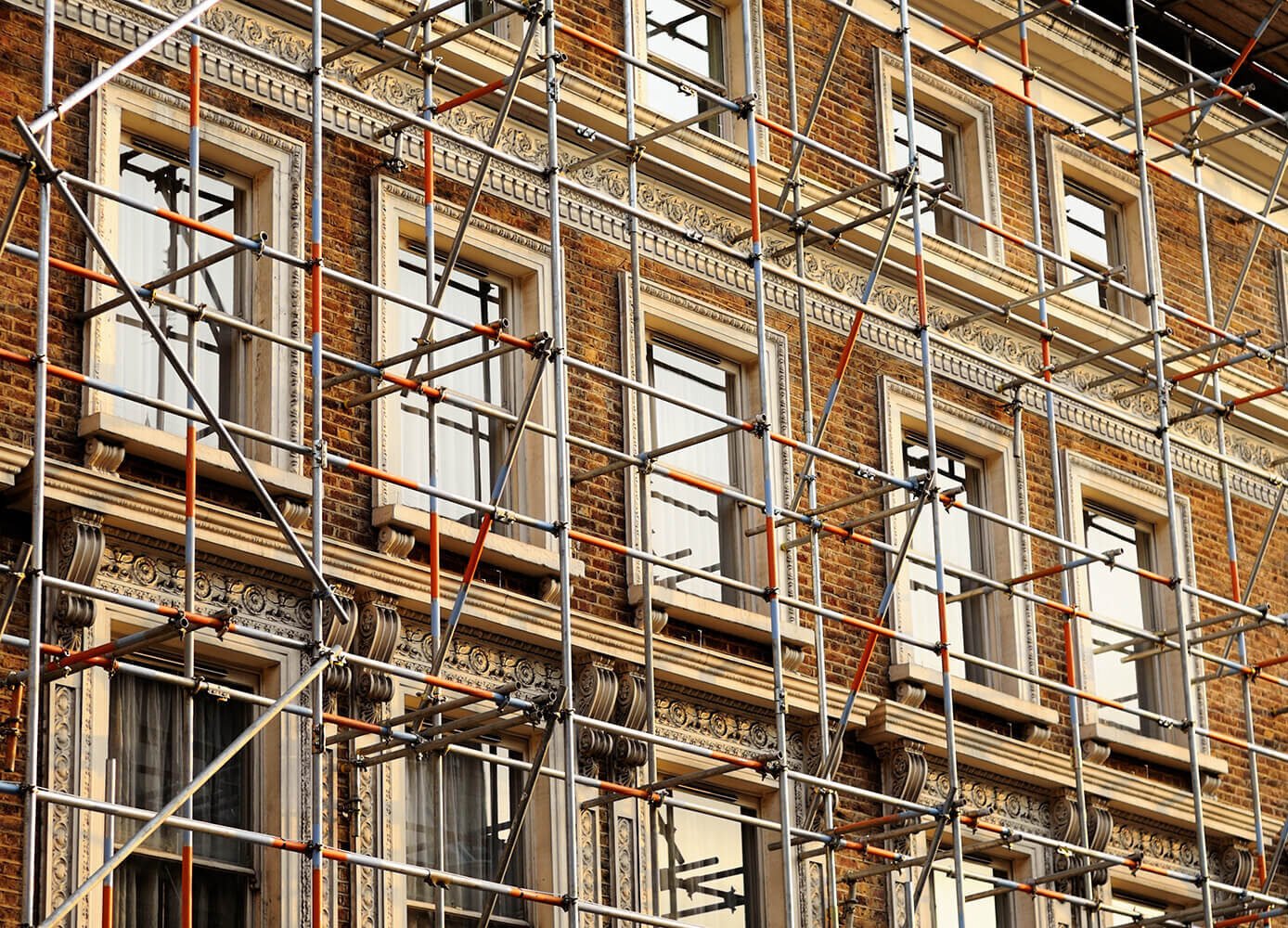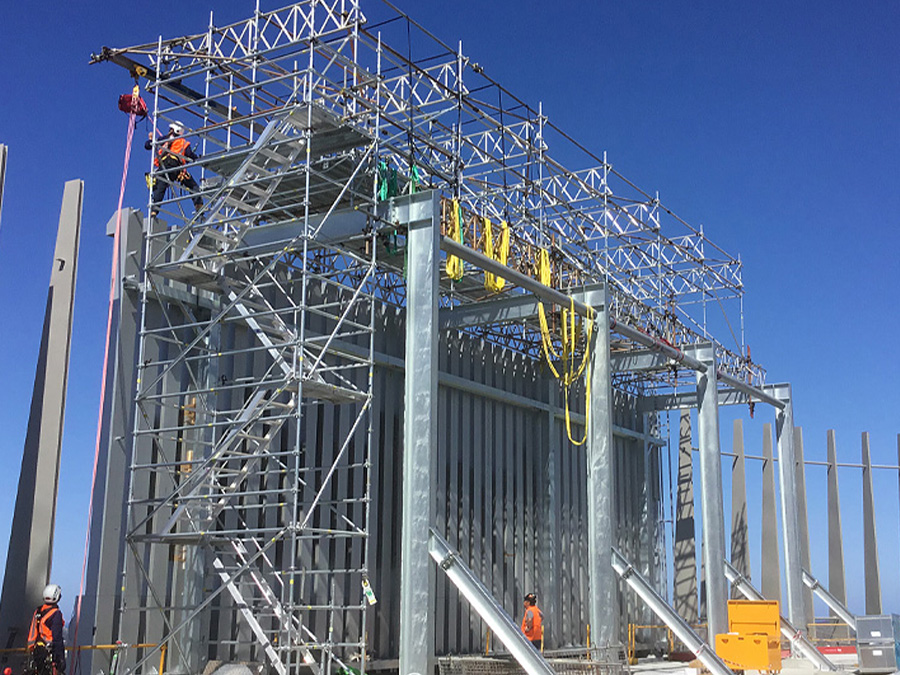Get the Best Scaffolding Cobham Services for Your Building Projects
Get the Best Scaffolding Cobham Services for Your Building Projects
Blog Article
Exploring the Various Kinds Of Scaffolding Made Use Of in Construction Projects
The construction market depends heavily on numerous sorts of scaffolding to satisfy details task demands, each offering unique benefits and applications. Conventional frame scaffolding provides a tough foundation for general tasks, while put on hold scaffolding is vital for work with high-rise frameworks. Other options, such as system and rolling scaffolding, deal with effectiveness and movement, specifically. The cantilever alternative verifies invaluable in urban settings where area is constricted. Comprehending the nuances of these scaffolding types is vital for enhancing security and efficiency on construction websites, prompting a closer exam of their one-of-a-kind features and applications.

Typical Framework Scaffolding
Traditional structure scaffolding is among one of the most extensively utilized methods in the construction industry due to its robustness and flexibility. This system includes upright and straight frames that are assembled to develop a stable system for products and workers. The main parts consist of upright blog posts, horizontal ledgers, and angled braces, which together offer a strong framework that can support significant tons.
One of the key benefits of standard framework scaffolding is its versatility to numerous construction tasks, ranging from property buildings to big industrial structures. The modular design permits for easy assembly and disassembly, making it efficient for both long-term and short-term projects. Additionally, the system can be tailored in elevation and width, fitting various building designs and site problems.
Security is extremely important in scaffolding applications, and conventional framework systems are outfitted with guardrails and toe boards to prevent falls and ensure employee protection. Furthermore, normal inspections and adherence to security policies are crucial in maintaining the integrity of the scaffold. On the whole, standard framework scaffolding stays an essential choice in the building industry, supplying a trustworthy platform for labor and enhancing total task effectiveness

Suspended Scaffolding
Suspended scaffolding provides a distinct remedy for construction tasks that need accessibility to elevated surface areas, especially in circumstances where standard framework scaffolding might be impractical. This kind of scaffolding is commonly suspended from the roof covering or top degrees of a structure, making use of a system of platforms, pulley-blocks, and ropes to develop a working area that can be adapted to various heights.
Among the primary benefits of suspended scaffolding is its flexibility. It can be easily repositioned or reduced to fit modifications in building and construction requirements, making it perfect for jobs such as home window installment, façade job, and maintenance on skyscraper structures. In addition, the minimal footprint of suspended scaffolding permits much better use of ground area in city settings, where room is frequently limited.
Security is a critical consideration in the use of suspended scaffolding. Generally, put on hold scaffolding offers a reliable and reliable service for accessing hard-to-reach locations in different construction circumstances, enhancing both performance and safety on site.
System Scaffolding
System scaffolding, usually pertained to as a modern-day solution in the scaffolding sector, includes pre-engineered elements that can be swiftly set up and adapted for different construction jobs. Scaffolding. This kind of scaffolding is defined by its modular design, which permits flexibility and scaffolder agency performance on task websites, accommodating various heights and architectural demands
Usually made from high-strength steel or aluminum, system scaffolding offers enhanced toughness and security. The parts include vertical blog posts, straight ledgers, and angled braces, which interconnect firmly, making sure a durable framework. The layout usually integrates standard fittings, simplifying setting up and disassembly processes, consequently minimizing labor time and costs.

Rolling Scaffolding
Rolling scaffolding is a flexible alternative to conventional fixed scaffolding, made for wheelchair and ease of use on building sites. This type of scaffolding contains a platform sustained by frames with wheels, enabling workers to conveniently move it as needed. The flexibility attribute dramatically improves performance, as it lessens downtime connected with dismantling and assembling dealt with scaffolding.
Typically constructed from lightweight materials such as aluminum or steel, rolling scaffolding provides a sturdy yet mobile solution for projects calling for regular repositioning - Scaffolding. It is particularly beneficial in tasks such as paint, drywall installation, and electric work, where access to different heights and areas is needed
Safety and security is paramount in rolling scaffolding design, with attributes such as locking wheels to stop unexpected movement when in use, and guardrails to shield employees from falls. Additionally, several designs are adjustable in height, accommodating various job needs.
Cantilever Scaffolding

The style of cantilever scaffolding normally entails using arms or brackets anchored to a building or framework, making it possible for the platform to extend outside securely. Safety is critical; therefore, these scaffolds must be engineered to withstand environmental problems and different lots. Regular inspection and maintenance are important to make sure structural honesty and employee safety.
Cantilever scaffolding is preferred for its flexibility and efficient usage of space, making it a prominent selection in metropolitan atmospheres where area restraints prevail. Furthermore, it helps with easier access to high elevations, eventually adding to the overall efficiency of construction jobs. Similar to all scaffolding kinds, appropriate training and adherence to safety and security requirements are critical for employees using cantilever scaffolding.
Conclusion
To conclude, the diverse sorts of scaffolding utilized in building jobs each offer unique functions customized to certain website needs. Typical structure scaffolding provides security, while suspended scaffolding provides flexibility for raised jobs. System scaffolding facilitates quick setting up, and rolling scaffolding boosts mobility for differing job settings. Cantilever scaffolding properly addresses obstacles in metropolitan settings. Understanding these scaffolding types is necessary for optimizing security and efficiency in construction, visit ultimately adding to the effective completion of tasks.
Conventional frame scaffolding supplies a strong foundation for general jobs, while suspended scaffolding is important for work on high-rise structures.Rolling scaffolding is a functional alternative to standard fixed scaffolding, made for wheelchair and simplicity of usage on construction websites. As with all scaffolding kinds, correct training and adherence to safety and security standards are critical for employees utilizing cantilever scaffolding.
Typical framework scaffolding gives security, while suspended scaffolding supplies flexibility for raised jobs. System scaffolding helps with fast setting up, and rolling scaffolding improves movement for differing job settings.
Report this page